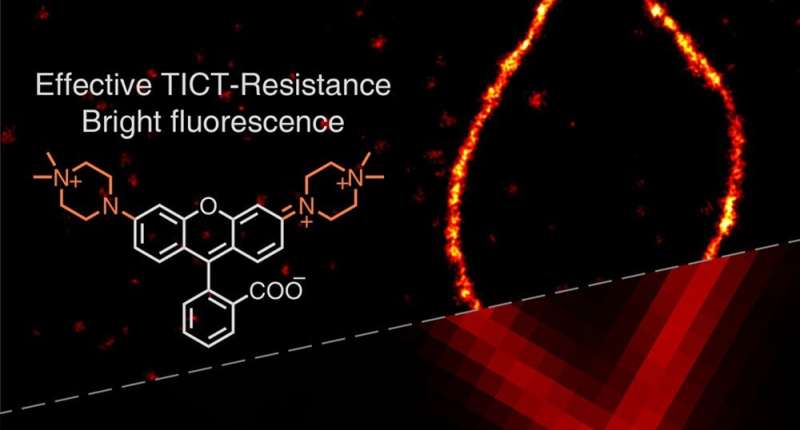Illuminating the path for super-resolution imaging with improved rhodamine dyes

In recent years, there has been a rapid evolution of advanced fluorescence imaging techniques such as single-molecule localization microscopy (SMLM) that allows for unprecedented resolution beyond the Abbe diffraction limit of the optical microscope.
However, insufficient brightness of fluorophores has posed a major bottleneck for the further advancement of this field and caused significant constraints to in vivo cellular dynamics studies.
Owing to the widespread applications of rhodamines in many super-resolution imaging studies, significant efforts have been taken to further enhance their performance.
Researchers from Dalian University of Technology (DUT) and the Singapore University of Technology and Design (SUTD) have developed a novel strategy for chemists to achieve brighter fluorescence and clearer resolution with the use of a new class of rhodamines. Chemists and scientists can now benefit directly from a wider colour palette that they can use during biological imaging. This will help them to distinguish intricate cellular structures for more precise analysis no previously possible. Their research paper has been published in the Journal of the American Chemical Society.
The researchers successfully demonstrated that this strategy was compatible with other families of fluorophores, resulting in substantially increased fluorescence brightness and "photon budget." The increased photon budget is critical to improve the resolution and clarity of super-resolution microscopes.
The key to this strategy was the combination of the mechanistic understanding of the photophysical process in these fluorophores (namely, twisted intramolecular charge transfer), and the tailed molecular design strategy to inhibit this detrimental process via an electronic inductive effect.
"With the close integration of computational and experimental studies to understand the structure-property relationships of fluorophores, the dye chemistry is currently transforming from trial-and-error to design-based molecular engineering. We expect more high-performance dyes will be created soon and thus greatly aiding the development of super-resolution microscopy," said Assistant Professor Liu Xiaogang from SUTD.
"In addition to brightness, other characteristics such as photostability and photo-activation properties need to be optimized to meet the stringent requirements of SMLM. We look forward to working closely with computational chemists to further advance the rational design of dyes for super-resolution imaging," added Professor Xiao Yi from DUT.
More information: Zhiwei Ye et al, Quaternary Piperazine-Substituted Rhodamines with Enhanced Brightness for Super-Resolution Imaging, Journal of the American Chemical Society (2019). DOI: 10.1021/jacs.9b04893
Journal information: Journal of the American Chemical Society
Provided by Singapore University of Technology and Design



















